Gardening is one of the oldest practices exercised by man, and in my family since I can remember it has been part of us, mainly instilled by my mom to whom I want to dedicate this beautiful post because it is she who inspired me to start and be part of this beautiful community @hivegarden and share with you our experience.
We recently harvested a bunch of cambur, the bunch of bananas as it is also known in other countries, usually the ripening process ranges from 80 to 180 days depending on many factors.
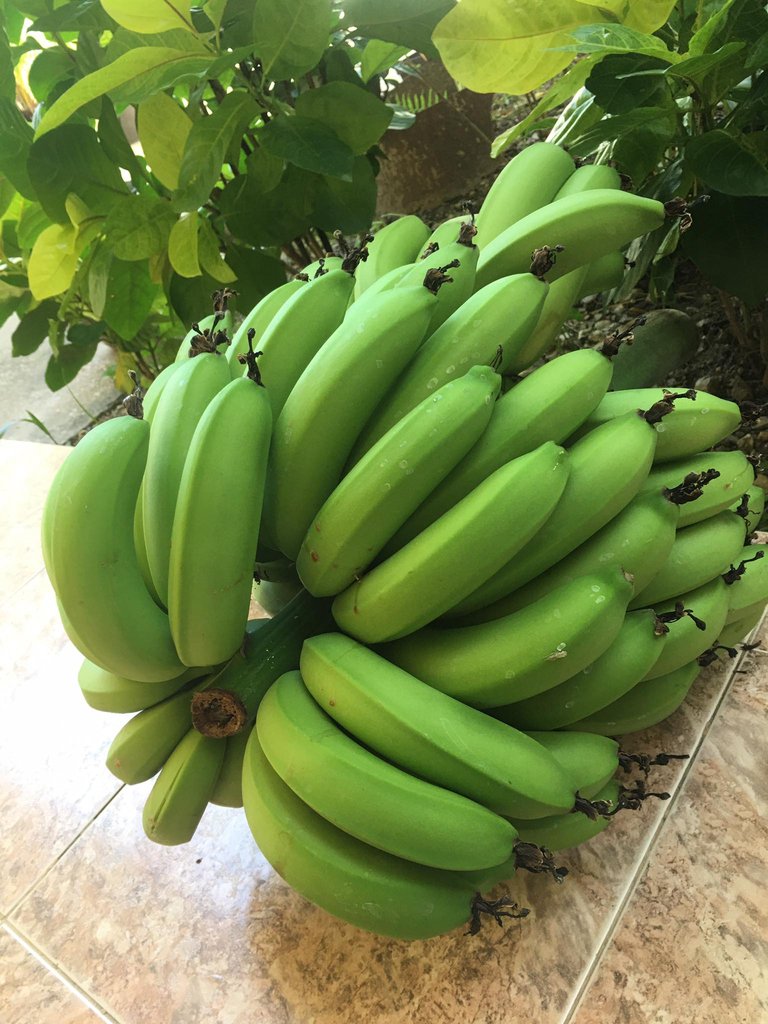
This particular bunch took 3 months to develop before it was time to cut it. We count from the time of cutting what we call false hands, which are the smallest camburs that sprout at the end, but these do not usually develop.
Once the bunch is cut, we usually proceed to remove the plant by pulling it from the root, but this time we did not do it this way.
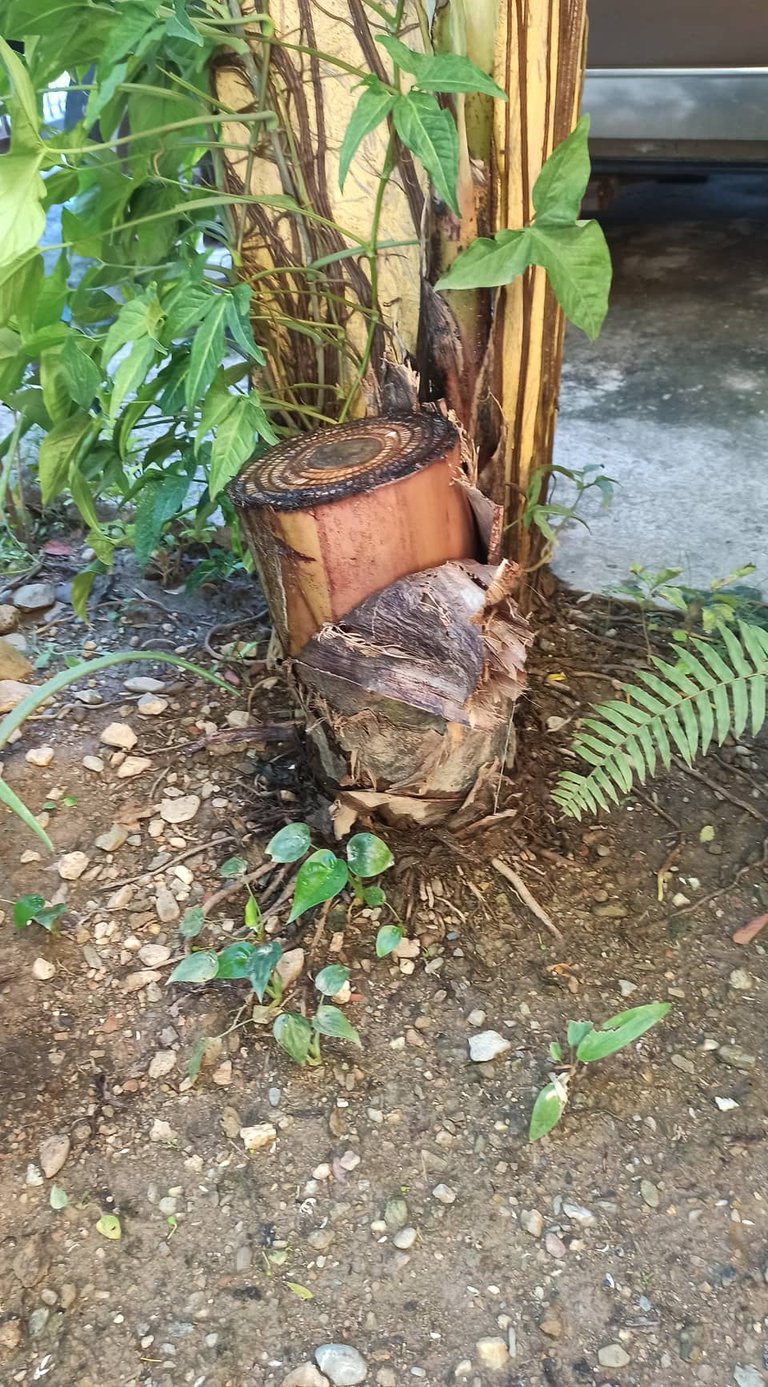
We wanted to test the theory of a great aunt who suggested us not to remove the plant from the root and cut the stem leaving about 30 to 40 centimeters long, allowing the banana plants or the children of this plant that are around it to take strength and this will allow it to grow faster, so it will not take so long to come out the bunch.
Here I show you the picture of the bunch already cut, I really had more hands but we were taking them to prepare tostón and also to eat it parboiled.
For us this is a new modality to leave a portion of the stalk uncut, however this is a test to see how it goes with the theory of the great aunt, later in a new post I will be telling you how it went.
At home we have two types of banana plants, one that is tall stemmed and another one that is known as dwarf, both differ in their heights and the size of their leaves, the dwarf plant has much larger leaves and is my favorite because I find it very beautiful to look at and also provides a lot of shade, which makes it ideal to be part of a small garden at home.
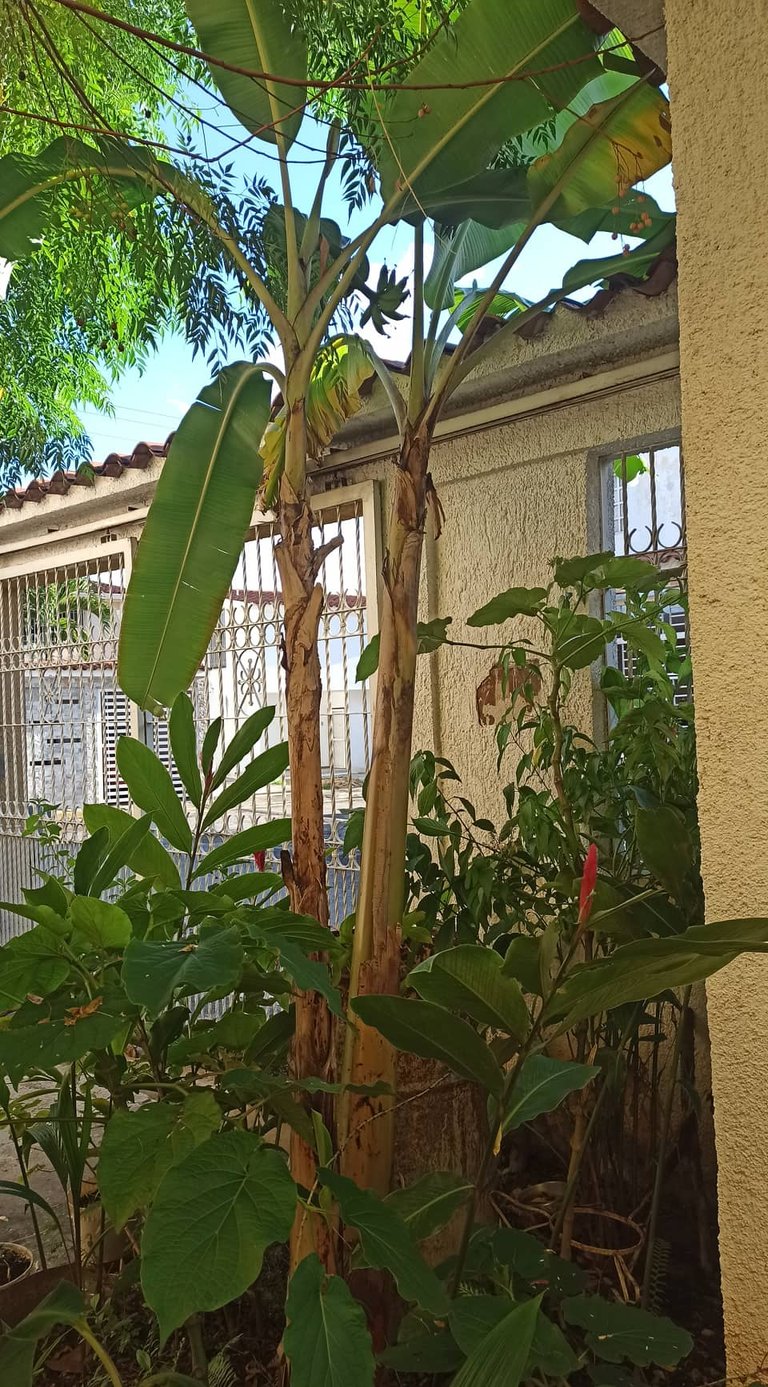
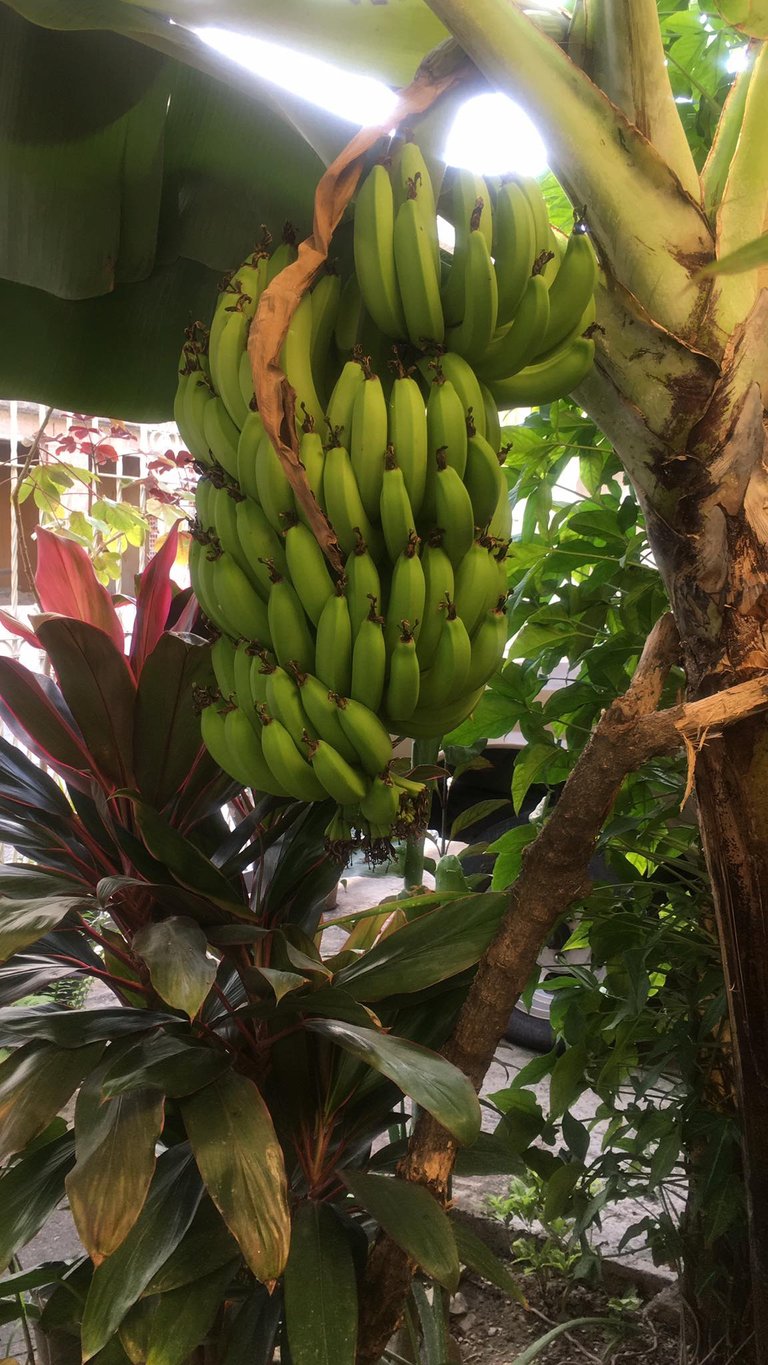
Once the bunch is cut, we keep it in this way, tied with a rope and covered with a black bag in order to accelerate a little more the ripening point.
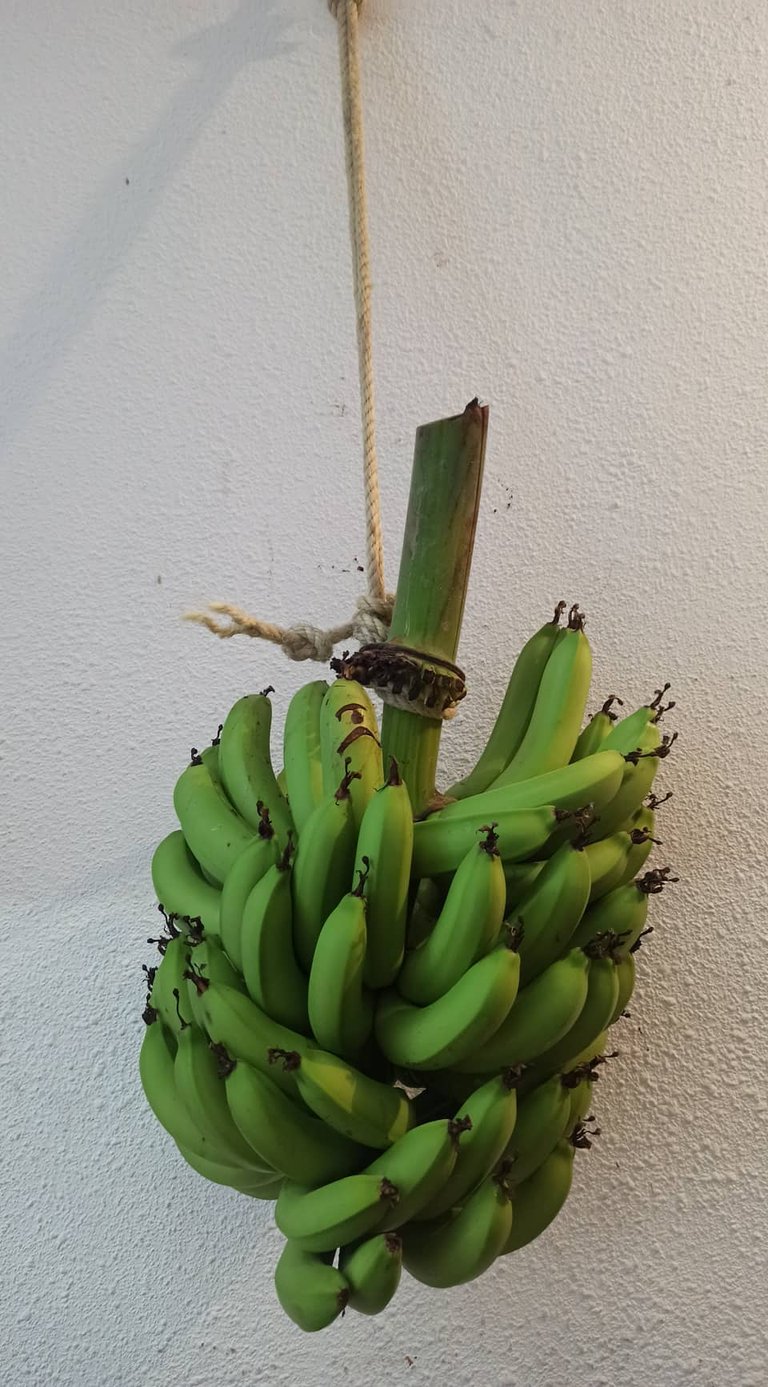
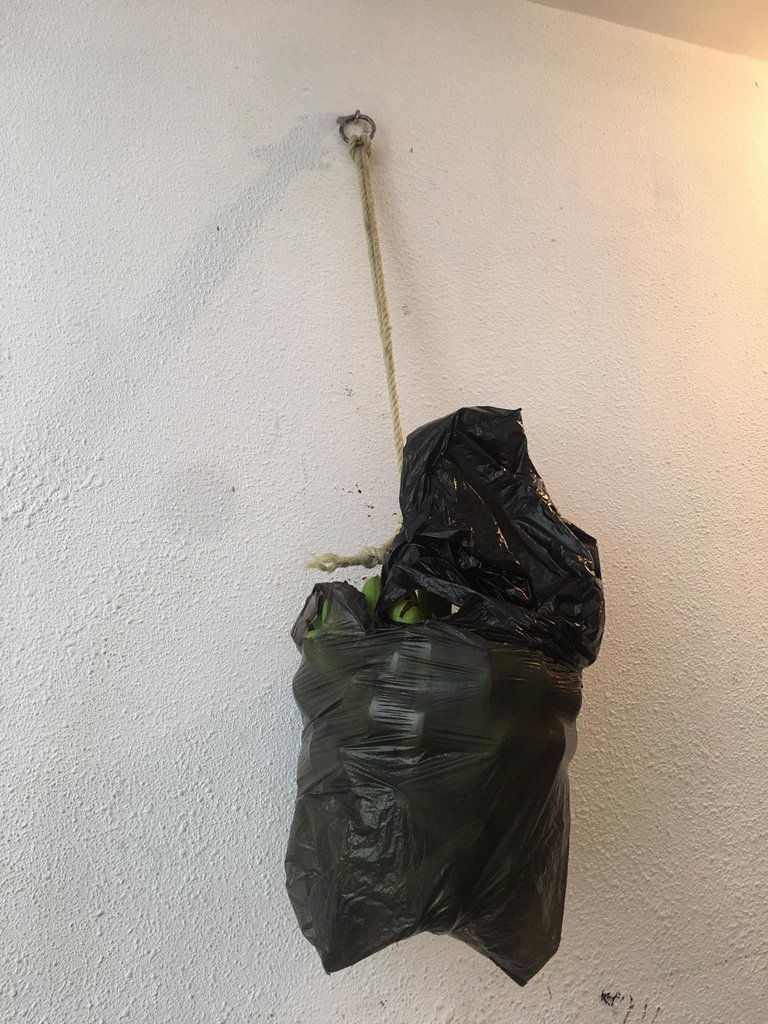
The wait for them to be ready is eagerly awaited by everyone at home, especially by my daughters who love to eat bananas.
Without a doubt it is beautiful and fills you with great satisfaction to collect the fruit of a plant that you have planted, maintained throughout its development and somehow you feel grateful and more aware of how kind the earth is with us.
I hope you enjoyed this post as much as I enjoyed creating it, and that it will also be of great benefit to you and that we can interact a little through your comments and suggestions. As always I send you blessings and wish you great success, thank you for reading me.
See you in a future post!

- #Photographs of my property, original, taken with a xiaomi redmi note 8 pro phone.
- #Editing I use canva and Paint programs.
- I use DeepL as a translator.
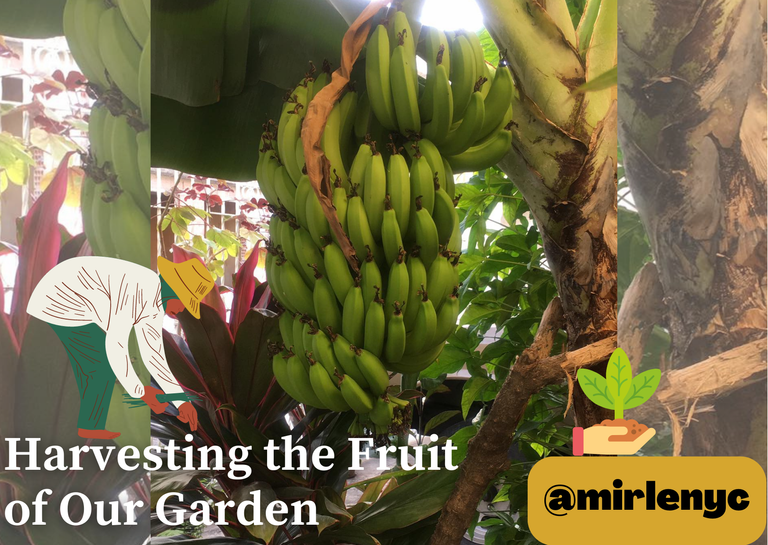
Sprouting goodness!🌱
thank you very much @plant.lovers
Hola amiga, yo tengo unas mata de cambur y hago lo mismo de tu tia abuela, hermoso esos cambures, gracias por mostralo.
Hola amigo @guelmi1958 gracias y que bueno saber que hay mas personas que aplican esa forma de mantener una porción de tallo, gracias por mencionarlo
Healthy looking bananas! My son loves them so much, and I wish I had a tree myself, lol. Hey I am curious, is your banana a clone?
If it really seems to be one of the favorite fruits for all, I really did not know the issue of cloned camburs but I was instructing me a little and if it is a clone as it is said that the clones are thick shell and small seeds, thanks for commenting @jonyoudyer